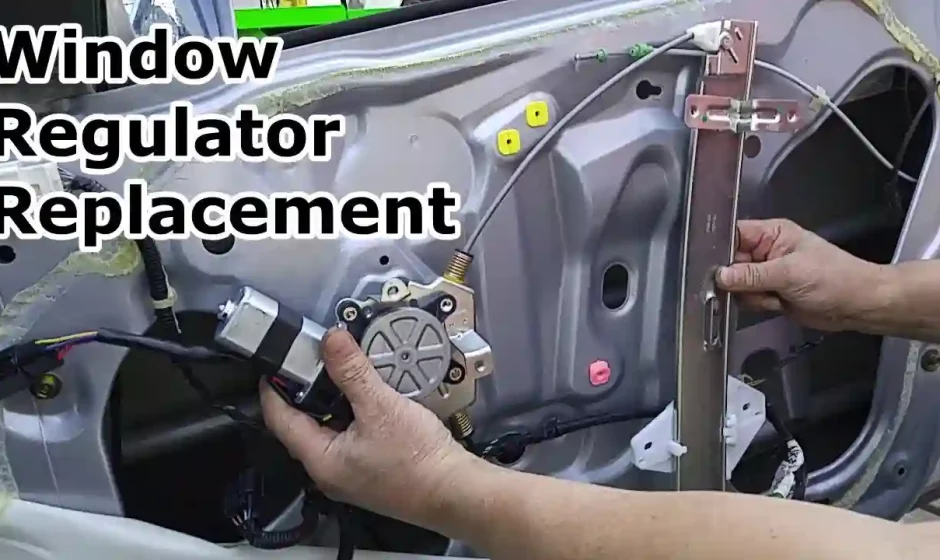When it comes to your car’s windows, you have two primary options: electric (power) windows and manual windows. While both serve the same basic function of allowing you to open and close your windows, they operate differently and have distinct characteristics. Over time, window regulators in both electric and manual windows can wear out and require replacement. In this article, we’ll explore the differences between electric and manual windows and discuss the considerations and process involved in replacing the window regulators for each type.
Electric (Power) Windows
Electric windows have become a standard feature in modern vehicles, offering convenience and ease of use. Here are some key characteristics of electric windows:
- Electric Motor: Electric windows are equipped with an electric motor that drives the window regulator’s movement. When you press the window switch, the motor engages, and the regulator mechanism raises or lowers the window accordingly.
- Individual Control: Each electric window typically has its own dedicated switch, allowing passengers to control their respective windows independently. The driver often has a master control panel to operate all windows from the driver’s seat.
- Convenience: Electric windows are known for their convenience. With the press of a button, you can effortlessly adjust the windows to your preferred position. This feature is especially useful when quickly adjusting windows while driving.
- Safety Features: Many electric windows come with safety features such as anti-pinch technology, which automatically stops the window if it detects an obstruction in its path, preventing injuries or damage.
- Automated Functions: Some vehicles have automated window functions that allow you to open or close all windows with a single button press, enhance ventilation, and improve cabin comfort.
Window Regulator Replacement for Electric Windows:
Replacing the window regulator in electric windows involves specific steps and considerations:
- Diagnosis: If you experience problems with an electric window, such as it not moving or making unusual noises, the first step is diagnosing the issue. It could be a malfunctioning motor, a worn-out regulator, or an electrical problem.
- Disconnect the Battery: For safety reasons, it’s essential to disconnect the car’s battery before working on the electric window system. This prevents accidental activation of the window while you’re replacing the regulator.
- Remove the Door Panel: Access to the window regulator is gained by removing the inner door panel. This requires removing screws, clips, and sometimes trim pieces. Be cautious not to damage the panel during removal.
- Disconnect Wiring and Components: Unplug the electrical connections to the window motor and switch. Depending on the vehicle, you may need to remove additional components to access the regulator.
- Remove the Old Regulator: Carefully detach the old window regulator from the window glass and track. This may involve unbolting it or disengaging any securing mechanisms.
- Install the New Regulator: Secure the new window regulator in place, ensuring it aligns correctly with the window glass and track. Reconnect any components that were disconnected during the removal process.
- Test the Window: After installation, reconnect the battery and test the window to ensure it operates smoothly and without issues. Make any necessary adjustments to the regulator or track if needed.
- Reassemble the Door Panel: Reattach the inner door panel, securing it with the appropriate screws and clips. Ensure that all components are properly aligned.
- Test Again: Before considering the job complete, test the window once more to verify that it functions correctly. Double-check the window’s alignment and sealing to prevent air or water leaks.
Manual Windows
While electric windows have become the norm, some older or more basic car models are equipped with manual windows. Manual windows operate without electric motors and rely on mechanical mechanisms. Here are some characteristics of manual windows:
- Hand Crank: Manual windows are operated using a hand crank or handle. Turning the crank in one direction raises the window, while turning it in the opposite direction lowers the window.
- Simplicity: Manual windows are straightforward and have fewer components than electric windows, making them less prone to mechanical failure.
- Cost Savings: Manual windows are often found in budget-friendly or economy vehicles, contributing to lower manufacturing costs.
Window Regulator Replacement for Manual Windows:
Replacing the window regulator in manual windows involves a simpler process compared to electric windows:
- Diagnosis: As with electric windows, diagnose the issue with the manual window. If it’s not functioning correctly, it could be due to a worn or damaged regulator mechanism.
- Remove the Door Panel: Access the window regulator by removing the inner door panel. This typically involves removing screws, clips, or trim pieces.
- Disconnect the Handle: Detach the manual window crank handle from the regulator mechanism. This may require a specialized tool or clip remover.
- Replace the Regulator: Remove the old window regulator by unbolting or disengaging it from the window glass and track. Install the new regulator in its place.
- Reattach the Handle: Secure the manual window crank handle onto the new regulator. Ensure that it operates smoothly.
- Test the Window: After completing the replacement, test the manual window to verify that it moves up and down smoothly without any issues.
- Reassemble the Door Panel: Reattach the inner door panel, securing it with the appropriate screws and clips. Verify that all components are properly aligned.
- Final Testing: Test the manual window one last time to ensure that it functions correctly. Check the window’s alignment and sealing to prevent air or water leaks.
Considerations for Window Regulator Replacement:
Whether you have electric or manual windows, there are several considerations to keep in mind when replacing the window regulator:
- Quality Parts: Use high-quality replacement parts to ensure the longevity and reliability of your window regulator. OEM (Original Equipment Manufacturer) parts are often recommended for optimal compatibility.
- Professional Assistance: If you’re not comfortable with DIY car repairs or if the job appears too complex, consider seeking professional assistance. Professional technicians have the expertise and tools to complete the replacement effectively.
- Safety Precautions: Prioritize safety by disconnecting the car’s battery before working on the window regulator. This prevents electrical accidents or unexpected window movement.
- Alignment and Sealing: After replacing the regulator, pay attention to the window’s alignment and sealing to prevent air or water leaks, especially in electric windows with automated features.
- Testing: Always thoroughly test the window after replacement to ensure that it operates smoothly and without issues. Address any problems promptly to avoid further complications.
In conclusion, whether you have electric or manual windows, window regulator replacement is a task that may become necessary over time. While electric windows offer convenience and additional features, they are more complex to repair due to their electric motors. Manual windows, on the other hand, are simpler but may require more effort to operate.
When replacing a window regulator, it’s important to prioritize safety, use quality replacement parts, and consider professional assistance if needed. Properly functioning windows are essential for passenger comfort and safety, making window regulator replacement a worthwhile investment in your vehicle’s maintenance and functionality.



